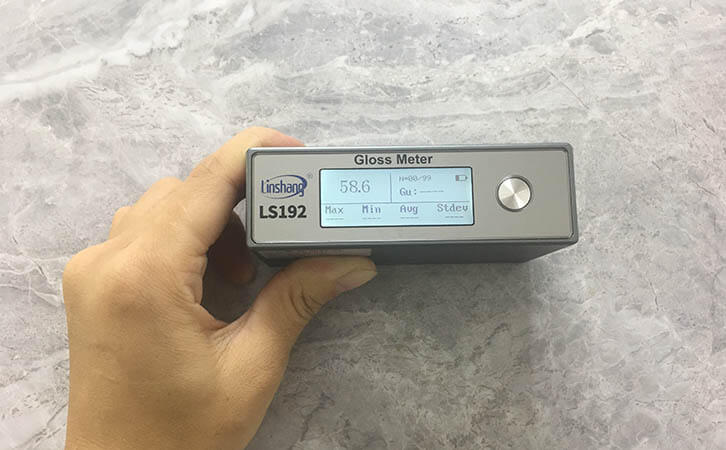Floor Gloss Meter | Florr Glossiness Measurement
Granite and marble are often used to make stone floors, and floors with high specular gloss tend to look very beautiful. The factors that affect the specular gloss are the smoothness of the floor and the chemical composition of the stone. Because the chemical composition of the stone is different, the gloss of the store floor made by the same process is also different.
Common home-decorated floors are made of different materials, structures, hardness, mineral granules, and the gloss of the finished floor is different. Granite and marble are generally polished. The gloss of marble is generally 80GU, and the gloss of granite can reach above 90GU. The floors made of these two stones require certain maintenance measures to maintain their gloss.
1. How to measure floor gloss?
We measure the floor gloss with a professional floor gloss meter to determine the gloss of the floor. The Linshang LS192 gloss meter uses a 60 degree measurement angle. The specular gloss measured by the Linshang LS192 floor gloss meter specifically refers to the reflected light flux from the mirror direction of the object to be tested and the mirror direction of the standard board with refractive index of 1.567 under the condition of 60 degree angle light source. The ratio of the reflected light flux. The gloss meter is mainly composed of a light source, a lens, a receiver and a display screen. The stone floor gloss meter can be used not only to measure marble and granite, but also to measure building materials such as terrazzo, ceramic tiles, plastic flooring, and fiber reinforced plastic panels. Mirror gloss.
2. Floor glossiness measurement value
As measured above, the floor gloss is measured using the LS192 floor gloss meter. It can be seen that the gloss is 58.6 GU. In addition to real-time measurement, the floor gloss meter can also automatically count the maximum, minimum, average and standard deviation value by collecting multiple measurement data. It can store up to 99 sets of test data, the data storage number can be set by the built-in computer software. The current range can be set is from 1 to 99 groups. This data statistic function helps users intelligently count test data and analyze the uniformity of floor gloss in multiple measurements.
In addition to the data statistics function, the LS192 floor gloss meter also has a temperature compensation function and a standard board self-diagnosis function, which can assist the instrument to obtain more accurate data.
